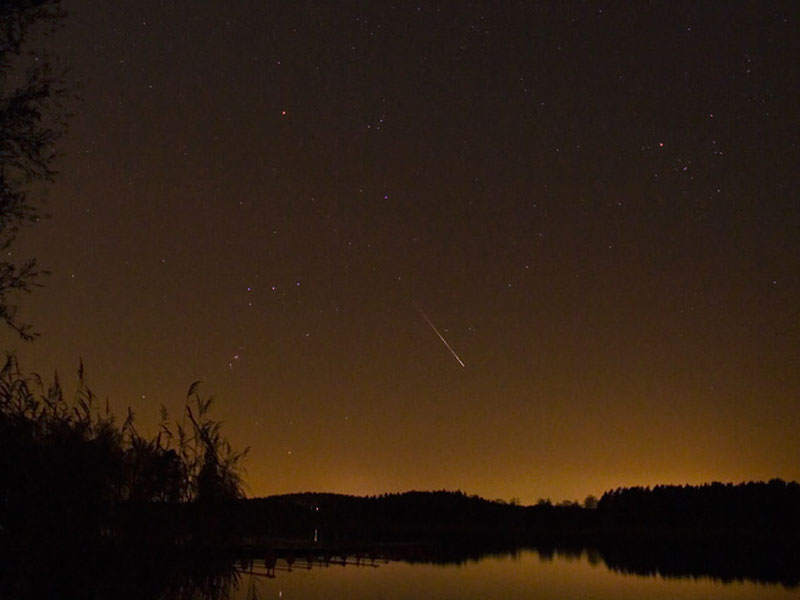Credit & Copyright: P-M Hedхn
Explanation:
This past weekend, small remnant bits of a distant comet lit up the skies over much
of
planet Earth.
Incoming reports, however, have this year's
Leonid meteor shower
as less active than Leonid meteor showers a
few years ago.
Nevertheless, some
sky enthusiasts reported peak
meteor bursts as high as one visual meteor per minute.
The parent body of the Leonids meteor shower,
Comet Tempel-Tuttle,
leaves a trail of expelled sand-size particles every 33 years when it
returns to the inner Solar System.
When the Earth passes through a stream of these Sun-orbiting particles, a meteor
shower results.
Pictured above,
a Leonid meteor was captured two days ago during the
early morning hours of November 19 over
Vallentuna,
Sweden.
Although activity levels in meteor showers are notoriously hard to predict,
some astronomers speculate that
Aurigids meteor shower
next September might be unusually rich in
bright meteors.
Authors & editors:
Robert Nemiroff
(MTU) &
Jerry Bonnell
(USRA)
NASA Web Site Statements, Warnings,
and Disclaimers
NASA Official: Jay Norris.
Specific
rights apply.
A service of:
LHEA at
NASA /
GSFC
& Michigan Tech. U.
Based on Astronomy Picture
Of the Day
